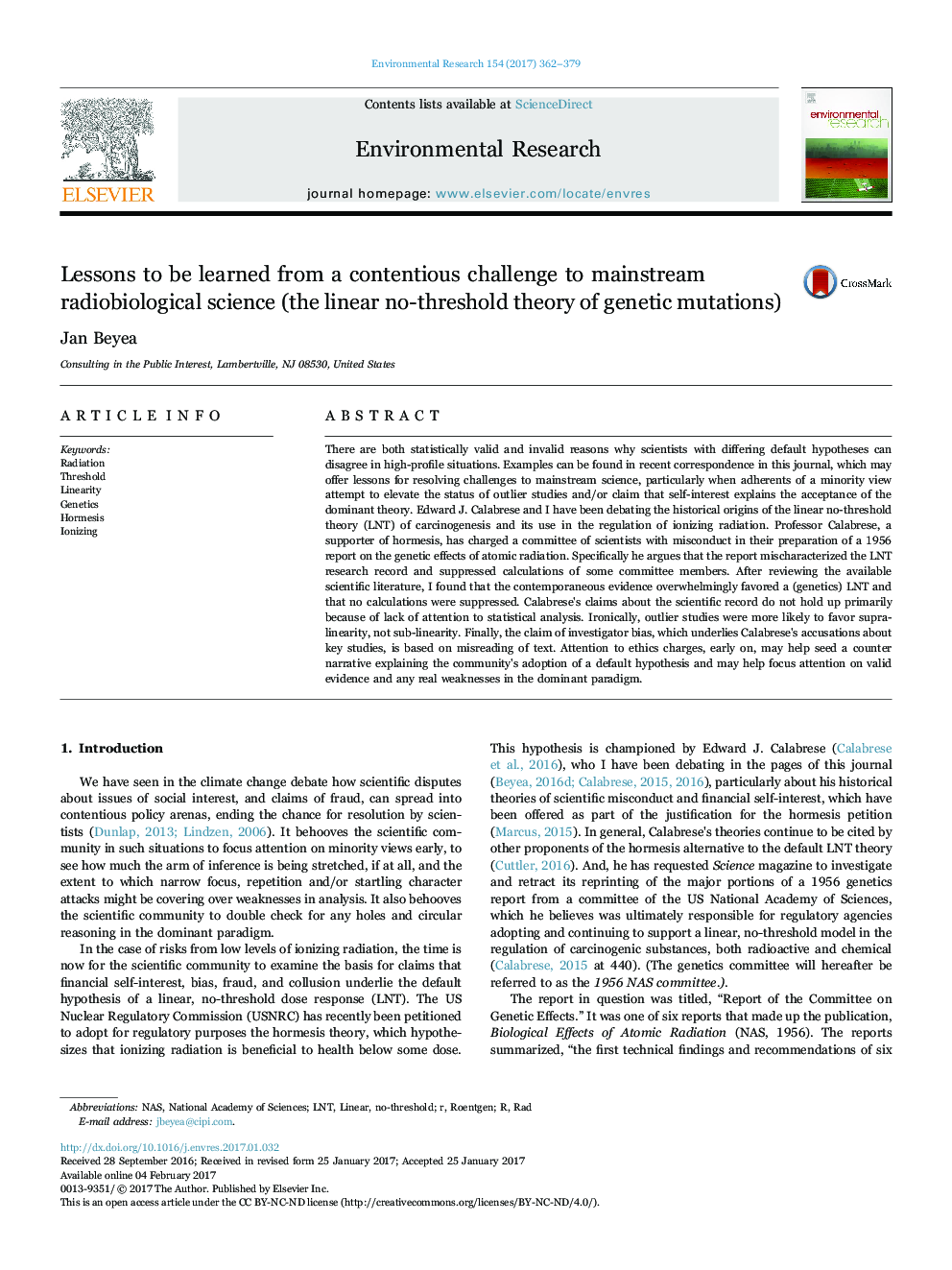| Article ID | Journal | Published Year | Pages | File Type |
|---|---|---|---|---|
| 5756431 | Environmental Research | 2017 | 18 Pages |
Abstract
There are both statistically valid and invalid reasons why scientists with differing default hypotheses can disagree in high-profile situations. Examples can be found in recent correspondence in this journal, which may offer lessons for resolving challenges to mainstream science, particularly when adherents of a minority view attempt to elevate the status of outlier studies and/or claim that self-interest explains the acceptance of the dominant theory. Edward J. Calabrese and I have been debating the historical origins of the linear no-threshold theory (LNT) of carcinogenesis and its use in the regulation of ionizing radiation. Professor Calabrese, a supporter of hormesis, has charged a committee of scientists with misconduct in their preparation of a 1956 report on the genetic effects of atomic radiation. Specifically he argues that the report mischaracterized the LNT research record and suppressed calculations of some committee members. After reviewing the available scientific literature, I found that the contemporaneous evidence overwhelmingly favored a (genetics) LNT and that no calculations were suppressed. Calabrese's claims about the scientific record do not hold up primarily because of lack of attention to statistical analysis. Ironically, outlier studies were more likely to favor supra-linearity, not sub-linearity. Finally, the claim of investigator bias, which underlies Calabrese's accusations about key studies, is based on misreading of text. Attention to ethics charges, early on, may help seed a counter narrative explaining the community's adoption of a default hypothesis and may help focus attention on valid evidence and any real weaknesses in the dominant paradigm.
Keywords
Related Topics
Life Sciences
Environmental Science
Health, Toxicology and Mutagenesis
Authors
Jan Beyea,
